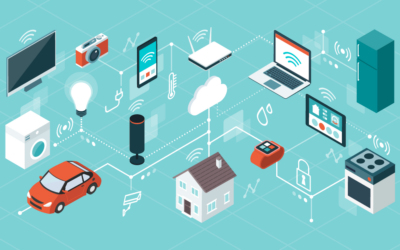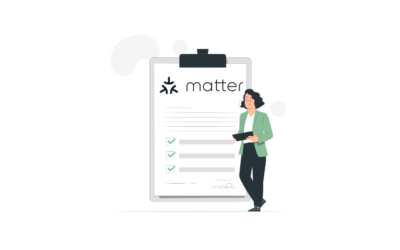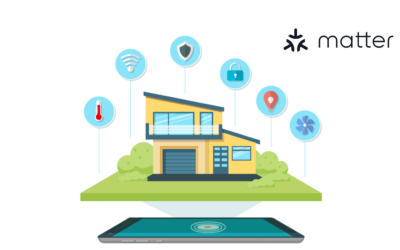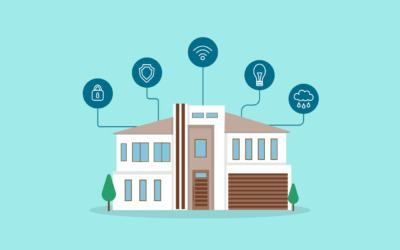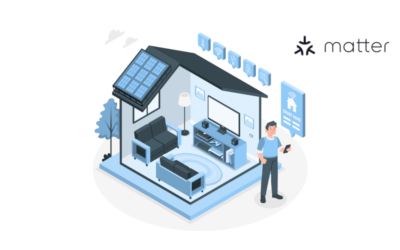The IoT market is offering manufacturers of electronic products the perfect timing to develop “plug-and-play” IoT devices or products that can seamlessly connect and interoperate within a trusted, unified IoT ecosystem.
Since the arrival of the Matter 1.0 standard and certification program last October (2022), consumers can adopt Matter-certified devices to fulfill their home automation dreams without the complexities of compatibility and interoperability.
The Connectivity Standards Alliance (CSA) is an association that promotes connectivity and interoperability for IoT devices and ecosystems. Formerly known as the Zigbee Alliance, it attracted a group of companies that support the open standard.
The Matter protocol is an IP-based application layer and data model that facilitates communication between devices using various IP protocols for transportation (Thread, Wi-Fi, or Ethernet) and Bluetooth for commissioning (setup).
The CSA also provides a certification program to ensure compliance with their specifications. This certification process helps to validate products’ interoperability and compliance with the CSA’s standards, infusing confidence in consumers and driving market adoption of Matter certified devices.
What is Matter Certification?
Matter Certification is the process of validating products through rigorous testing and adherence to a Matter Standard program. This program is specifically tailored to suit the type of product, whether end products, components, or platforms, under the Connectivity Standards Alliance (CSA) specifications.
Matter utilizes radio frequencies and an application layer that operates on top of multiple transport protocols. Furthermore, Matter devices must have certifications from the transport protocol governing organizations and radio frequency (RF) certifications incorporated into these transport protocols, ensuring compliance with regional regulatory agencies.
Matter Certifications guarantee connectivity, interoperability with other Matter devices, and a vast, highly secure ecosystem. This security is further reinforced through requirements for network security attestation certifications, unique IDs, and a distributed ledger powered by blockchain technologies.”
Assess your existing IoT products and convert them to Matter products or build new Matter-certified products from scratch by partnering with Krasamo—An IoT development company in Plano, Texas.
Determining the Type of Matter Certification
The construction of Matter-compliant devices or the development of Matter certified products with Matter support necessitates compliance with the Connectivity Standards Alliance (CSA) specifications and interoperability within a certified program. These certification programs vary depending on the type of product. The three types of products are:
- Compliant Platforms.
- End Products (personal and commercial)
- Software Components
Two key components of Matter compliant products are a radio and a microprocessor with storage capabilities that runs firmware.
All platforms are tested for compliance with specifications before turning them into end products. Subsequently, these end products undergo conformance testing to ensure their adherence to the Matter standard.
Software components, ranging from interfaces and applications to libraries, are certified under the Matter protocol. These components perform functionalities and support configurations outlined in the Alliance specification and operate within a Supported Operating Environment (SOE).
The SOE plays a critical role in supporting the underlying hardware of IoT devices. Similarly, manufacturers have the option to use pre-made (Type 2 UIC) or implement Matter defined functionality (Type 1 UIC) User Interface Components (UIC).
Certified Matter products follow usage guidelines, can use the associated Matter certified product logo, and are included in the CSA product database (CSA listed), where consumers can verify them.
How Do I Get Matter Certified?
Become a Member
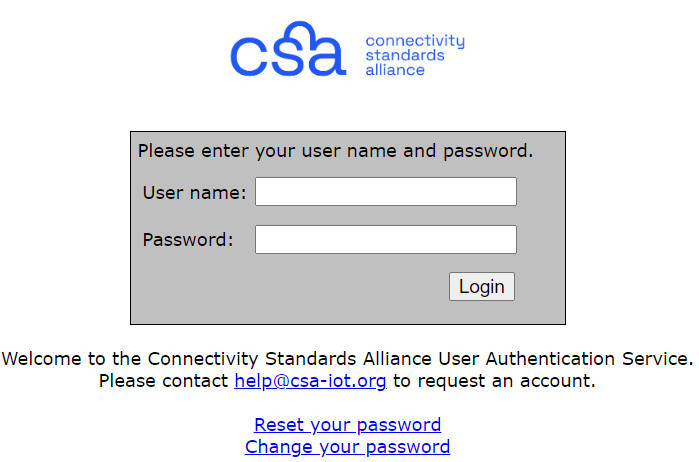
To develop, test, and certify Matter products, you must become a member of the Alliance, choosing from one of the available membership types. This is a prerequisite for having products listed on the Alliance’s website. Except for associate members, all others can participate in member meetings, workshops, developer conferences, and test events. Members can also contribute to creating marketing assets and communication activities (blogs, press releases), use the Alliance’s trademarks and logos, and receive marketing collateral.
- Associate Members ($0 USD/yr). Associates primarily use Matter-based IoT products, not actively involved in development. To certify products at this level, they must collaborate with Participant and Promoter members and engage in the Transfer Program with rebranding or white labeling. This involves a cost of $2500 per product and an additional $500 fee per year.
- Adopter Members ($7,000 USD/yr). Adopters are authorized to build products using existing specifications. They can develop, test, and certify products for $3000 each. Additionally, they can certify derivative products and transfer products to a third party for $2500 each.
- Participant Members ($20,000 USD/yr. + Initiation Fee) Participants can contribute and develop specifications, access working groups, and the advantage of early draft specifications and testing materials. They can develop, test and certify products at $2000 each, transfer products to a third party for $1500, and certify derivative products. Participant members can participate, vote, share in work groups, contribute or develop use cases, market requirements, and specifications.
- Promoter Members ($105,000 USD/yr.) Promoters contribute, develop, and adopt standards, lead approval processes on all standards, and participate as directors and committee boards. They can develop, test and certify products at $2000 each, transfer products to third parties for $1500, and certify derivative products. Promoter members can participate, vote, share in work groups, contribute or develop use cases, market requirements, and specifications.
Member access is required to read the CSA Matter Resource Kit, which includes information on specifications, testing, certification, attestation, branding, distributed compliance ledger (DCL), and marketing.
Additionally, members have access to the CSA PICS Tool. This tool is used for generating the XML Protocol Implementation Conformance Statement (PICS) document. The PICS document describes the product’s configuration and features to be submitted to the testing provider.
Certification Transfer Program
The Standard Alliance certification allows members to transfer end products to new companies (re-certify). This certification transfer program applies to products that maintain their original functionality, facilitating a faster marketing and distribution process for IoT products.
Associate Members collaborate with Participant or Promoter Members to certify white-label products through the Certification Partner Program.
Request a Manufacturer ID / Vendor ID
Request a manufacturer ID for products and vendor Id for software components. It is a necessary step for certifying Matter products and accessing its ecosystem.
Matter Product Development
Develop your products using Wi-Fi, Thread, or Ethernet, and use a microprocessor or hardware provider certified by the transport protocol to save time. Begin by preparing a PICS document, which should describe how your product implements the Matter protocol. To prepare for the official testing process, conduct local tests (pre-testing) to ensure your product meets the required standards.
Choose Network Transport Protocol or Compliant Platform
Matter-certified products operate using a network transport protocol like Wi-Fi, Thread, or Ethernet. These products require certification from the respective protocol organization before Matter can certify them. For Zigbee products, the Alliance has tested platforms that comply with its specifications, and these platforms are available from several silicon vendors.
Perform Matter Certification Testing
Certification is available to CSA members. Products must undergo testing by an authorized third-party CSA testing provider, which carries out validations for eligibility and Matter certification. Once testing is complete, the testing provider has directly sent the final test report to the Alliance. Additionally, complete the Alliance’s security attestation form.
Apply for the Matter Certification
An application for the product must be submitted using the Connectivity Standards Alliance Certification Web Tool. The required Matter Certification documents should accompany this application. These include the network transport certifications, declaration of conformity, PICS document, and test reports.
Certification Declaration (CD)
The Production Certification Declaration (CD) is a critical component of the Matter certification process. By submitting a Production CD, manufacturers affirm that their products adhere to the standard requirements, ensuring interoperability with other Matter-compliant products.
Matter products receive a Certification Declaration blob file and a product record (Certificate ID) upon certification. These elements are added to the Distributed Compliance Ledger (DCL), supplanting the testing CD. This file, embedded in the IoT device, verifies device authenticity and reliability, highlights certification status, and provides resources to assist users.
Matter uses Distributed Compliance Ledger for Certification.
The Distributed Compliance Ledger is a decentralized blockchain network—designed to aggregate data across network participants and facilitate product searches. Enforcement of Matter certification is achieved via the Distributed Compliance Ledger, essential for commissioning devices into Matter networks.
Summary of Matter Certification Documents
- Confirmation/Declaration of Conformity (DoC)
- Protocol Implementation Conformance Statement (PICS)
- Final test report (must be submitted directly to the Alliance by your test provider)
- Certification Document of Network Transport Attestation for Matter Devices
- Certificate of Security Attestation specific to the certification type.
Matter Development Services
If you’re interested in developing Matter devices and obtaining certifications, we invite you to connect with our team of IoT engineers. They will guide you through Krasamo’s approach and engagement options. Contact us today to learn more about Matter development and discuss the following topics:
- Matter development: Firmware applications and dedicated application layer
- App development: User experience (UX) design for Android Matter apps and iOS apps
- Architecture design: Evaluation and selection of Matter hardware platforms
- Analysis of use cases to implement functional security aspects such as firmware attestation and authentication
- IoT open-source development with an agnostic mindset
- Compliance with Matter specifications and the certification process
- Ensuring maintainability of Matter devices with evolving Matter revisions
- Adherence to Matter principles
IoT Services by Krasamo
- Embedded Development
- IoT App Development
- Firmware Development
- Real-Time Operating Systems
- IoT Architecture Design
- IoT Data Pipelines and Analytics







